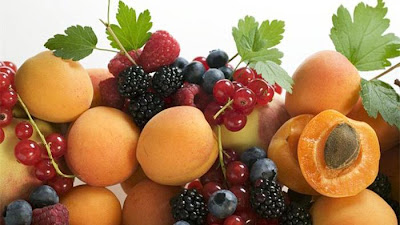 |
| My handsome boy, Sunny, enjoying an almond |
 |
| My lil' diva, Babygirl, with an almond |
I've had the privilege of owning two wonderful small conure Senegal parrots for the last 5 years (Pictured above). While interning at Parrot Garden, I ended up adopting a blue Indian ringneck, adding to my feathered family (Pictured below)! One of the issues that I always run into is what kind of food is best for them? I've tried looking on the internet and most sites usually tell me different things on what is most nutritional for your parrot.
 |
| HMM.. Looks like someone decided to help herself :) ! |
At Best Friends, they have two main pellets they feed to their parrots (Click on the bird food names to learn more information):
Roudybush Bird Food is the main brand of pelleted diet given to the parrots, because it's less costly than Harrison's, but still serves as a balanced diet. Typically, only the heavy-set amazons get fed Harrison's Bird Food, because it's a more monitored diet plan for the parrots who need to lose some weight.
When it comes to fresh fruits, vegetables, and grains, I'm always wondering which are the best to give to my birds. Stacie was kind enough to list a few off for me!
-Anything orange (Preferably cooked):
-Carrots
-Butternut/acorn squash
-Sweet potato/yams
-Pumpkin
Cooked beans:
-Lima beans
-Kidney beans
-Black beans
-Green beans
-Sweet/snap peas
-Etc
-Lentils
-Broccoli
-Red, green, yellow, orange, and jalapeno peppers
-Any dark, leafy greens (Ie: Kale, dandelion greens, etc)
-Cooked whole grain brown rice
-Cooked whole grain wheat pasta
With most of the vegetables, such as the dark leafy greens, make sure to boil them a little bit, because cooking them releases more nutrients.
To ensure your parrot(s) healthiness, make sure the fresh food is left out for only 3-4 hours. This helps prevent the spread of bacteria.
 | |||
| Parrot Gardens version of 'chop' |

Side Note: If you feed your parrot(s) cooked corn, try to limit the amount they eat, because it doesn't have any nutritional value for your bird. If you do plan on adding corn to your chop, add a minimal amount and make sure to blend everything together. By blending the food, it makes it harder for you parrot to pick out only the corn (which they tend to love) and forces him/her to eat the more healthier veggies! This is a great tip for picky parrots!
This website will show you how to make your own chop, separate it into portion-sized zip-lock bags, and freeze them until you need them! A very cost efficient way to make your own parrot food. This is one tip I am definitely using on my parrots when I get back home!






We have a Senegal Parrot, too! We always assumed that Cheddar was a male due to the bright coloring, but this year SHE began laying eggs! I've had her 12 years and my friend had her for at least 5 years before that. We're just so surprised! She's a very spoiled little girl, but I've heard that we should supplement her diet with calcium. What do you think?
ReplyDelete